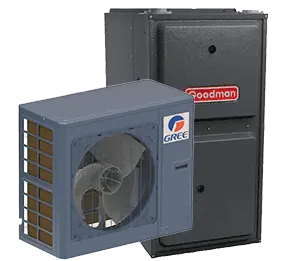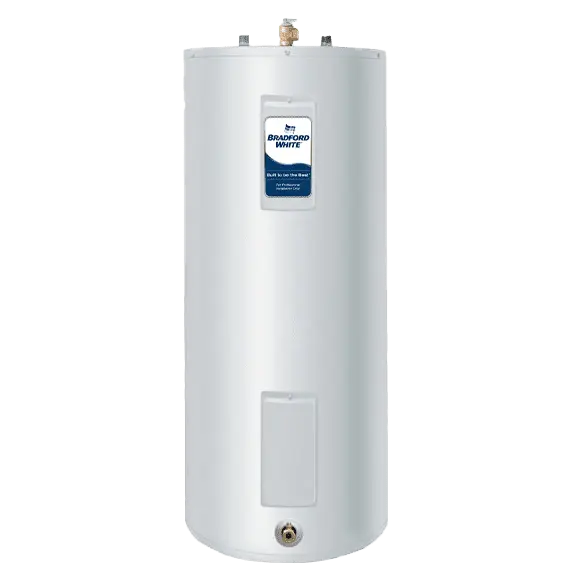Preparing Your Heat Pump for BC’s Rainy Season

Tips to protect outdoor units and maintain airflow during wet months.
Why Rain Isn’t the Enemy, Restricted Airflow Is
Outdoor heat pump cabinets are built for the weather. The real efficiency killer in coastal BC is blocked airflow and poor drainage. When fins are matted with debris or the base sits in standing water, heat exchange suffers, run time grows, and comfort slips. Your goals: keep air moving around the cabinet, keep the coil clean, and let water drain away quickly. NRCan notes outdoor units need to be kept clear of snow/ice and debris so heat exchange isn’t choked.
The 5-Minute Rainy-Season Check (Do This Monthly)
- Clear the perimeter: Maintain the clearance in your unit’s manual (many specify ~24 in / 61 cm on all sides). Trim shrubs and pull yard waste away.
- Sweep the top and grille: After storms, remove leaves/needles from the cabinet and pad so they don’t get drawn into the coil.
- Confirm solid footing: The unit should sit level on a stable, draining pad, not soft soil. If you see puddling or sinking, book service.
- Look through the coil: If fins look caked with grime, plan a gentle rinse (see below) or a professional coil wash.
- Listen & feel: New rattles, short cycling, or a persistent “whoosh/whine” after a storm can signal airflow or electrical issues; time to call a pro.
Gentle Coil Care (What You Can Safely Do)
- Turn the power OFF at the outdoor disconnect switch before any cleaning.
- Use a garden hose on low pressure to rinse from the cleaner side outward. Do not pressure-wash; it can bend fins and reduce performance.
- Let the unit air-dry; do not wrap or tightly cover the cabinet, as covers can trap moisture and accelerate corrosion.
- If fins are bent or grime is stubborn, schedule professional service; technicians use the right cleaners and fin combs.
Drainage & Elevation in a Rainy Climate
- Direct water away: Downspouts and roof drip lines shouldn’t dump onto the unit. Add a splash block or extension if needed.
- Keep weep holes clear: The base pan’s drain openings must stay free of mud or needles. (Many units include a base-pan drain/adapter to route meltwater; keeping this path clear prevents pooling.)
- Consider elevation: In high-water areas, a taller, rigid base or shims can prevent chronic puddling and vibration.
DEFROST in Cool, Damp Weather (What’s Normal vs Not)
On cool, damp days, the outdoor coil can frost. During DEFROST, the unit briefly reverses to melt ice; a change in sound and visible steam is normal. Call a technician if thick ice won’t clear after DEFROST, if DEFROST repeats rapidly, or if breakers trip; those can indicate airflow, sensor, or charge issues.
Indoors Matters Too: Filters, Vents & Modes.
- Replace/clean filters on schedule; a clogged return starves the indoor coil, forcing longer run times.
- Keep supply and return vents open; closing many vents can unbalance airflow.
- Set the correct mode: Use HEAT in winter and COOL in summer rather than AUTO to avoid inefficient flip-flopping on shoulder-season days. (BC Hydro also recommends avoiding ‘Auto heat/cool’ to reduce unnecessary cycling and energy use.)
When to Book a Professional Service
A rainy-season tune-up about every 1–2 years helps catch minor issues early. (BC Hydro recommends a heat-pump tune-up every one to two years.) A Moore & Russell technician will verify electrical connections and controls, inspect coils and drainage, check refrigerant performance, confirm clearances/level, and test DEFROST operation.
Prefer set-and-forget? Enroll in a Maintenance Plan for seasonal tune-ups, post-storm checks, and priority service, timed to BC’s rainy season.
Quick Homeowner Checklist (Pin This)
☐ ≥18″ clearance all around (or per manual)
☐ Leaves/needles cleared after storms
☐ Stable, draining pad (no puddling)
☐ Filters clean; all vents open
☐ Gentle coil rinse as needed (power OFF; no pressure washer)
☐ Annual professional tune-up scheduled
FAQs
Should I cover my heat pump in heavy rain?
No. A tight cover traps moisture and can corrode components. Keep it clear and uncovered so it can breathe.
I see clouds of “smoke” from the outdoor unit on cold, rainy days. Is something burning?
It’s almost certainly steam from the DEFROST cycle. If steam is constant, ice won’t clear, or breakers trip, book a technician visit.
Is it safe to run the heat pump during a downpour?
Yes, outdoor units are designed for weather. If airflow is blocked by debris or the base is in standing water, switch it OFF, clear the area, and restart.

